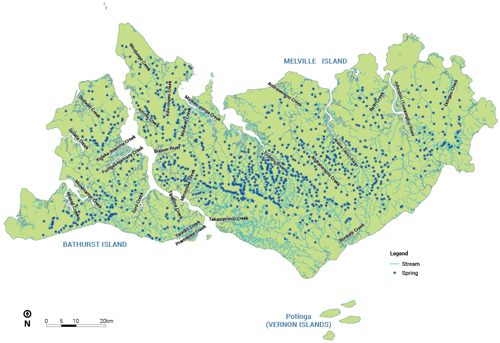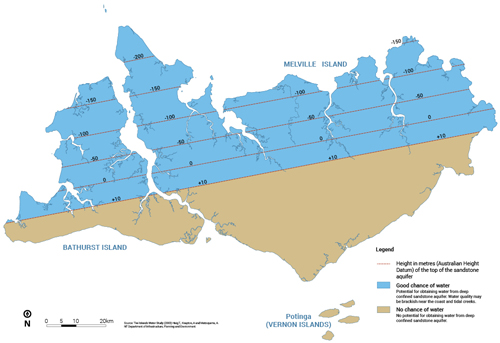Water Resources
The Tiwi Islands are valued for their freshwater resources, which are used for domestic supply, recreation, food gathering and tourism. Short-term demand for water also occurs during periods of infrastructure development, such as road and airstrip construction, and upgrades. Assessments of water resources over the past 15 years indicate that there is plenty of freshwater on the islands and, at current usage rates, there is no threat to the health and sustainability of the reserves.
Freshwater springs on the islands provide high quality waterfalls and swimming areas for Tiwi people and tourists. Popular destinations include Tumwarripi falls and Maralumpi waterhole on Bathurst Island, and Taracumbi falls and Kilu-Impini waterhole on Melville Island. The largest rivers are the Johnson and Jessie Rivers on Melville Island; they are about 40 kilometres in length and are used by local fishermen and fishing tour operators.
Rainforests on the Islands have been identified as highly significant at the Northern Territory scale, and wetlands and riparian areas as important for conservation values. These ecosystems are dependent on ground and surface water for their health and maintenance. Current levels of water use are not affecting these important areas, but any increase in the number of bores will require further monitoring.
Tiwi people value water resources in a number of inter-related ways; they provide bush foods and medicines, are part of a culturally significant landscape, and have the potential to sustain future water-related businesses and employment such as tourism.
Further information: Water Resources of the Tiwi Islands
Surface Water
|
|
Deep Groundwater
|



